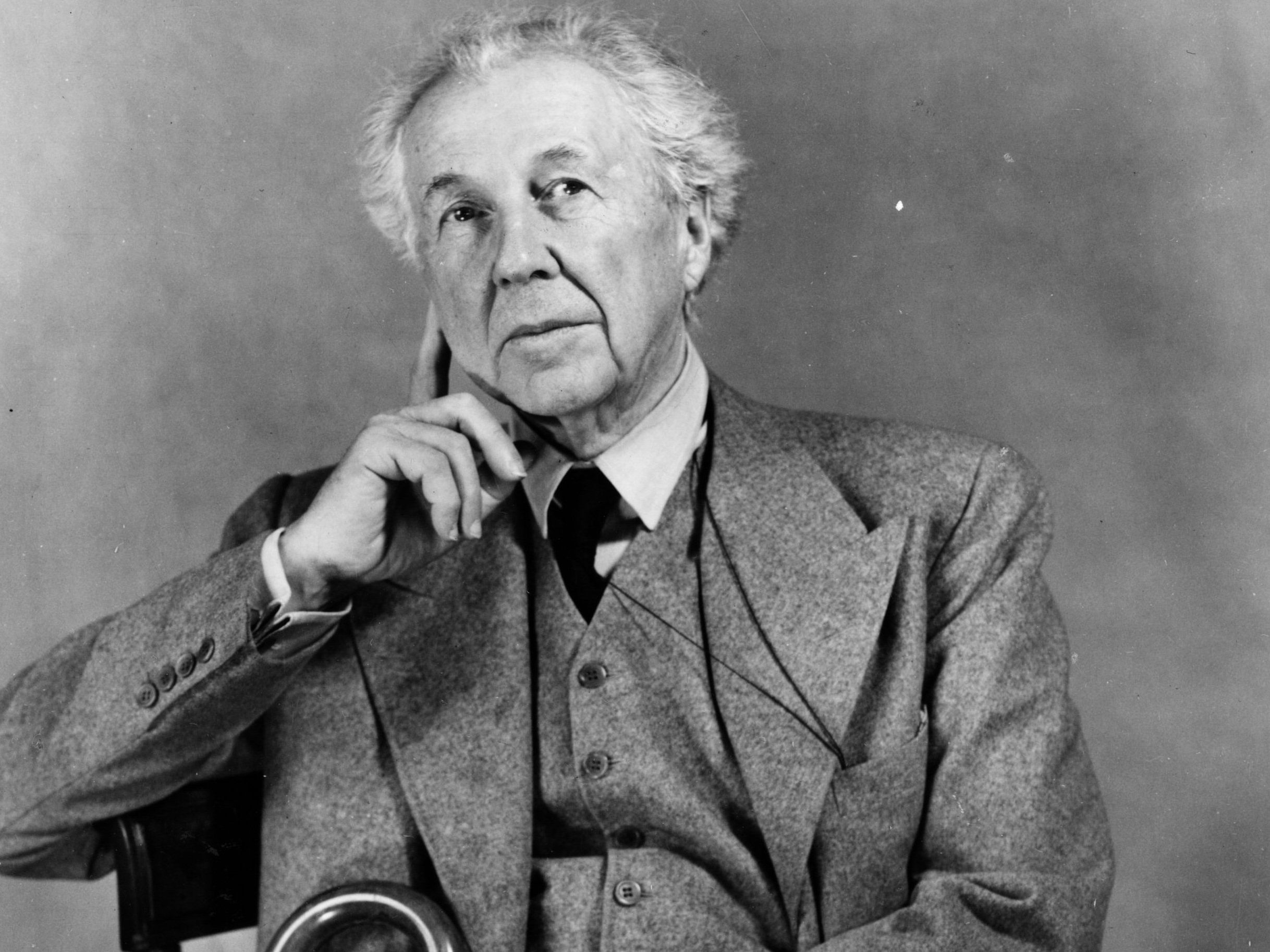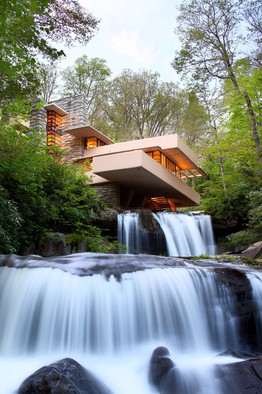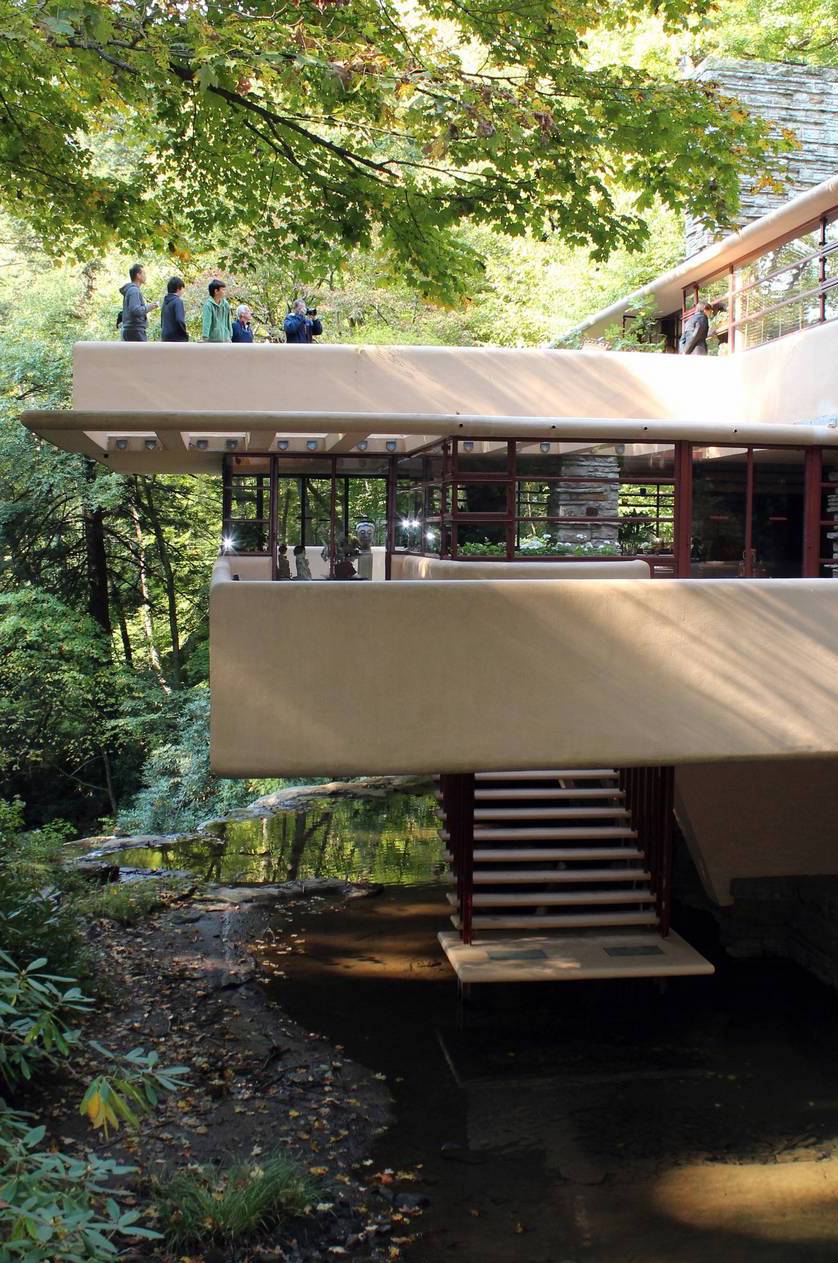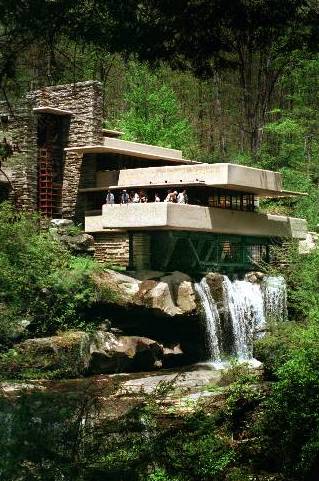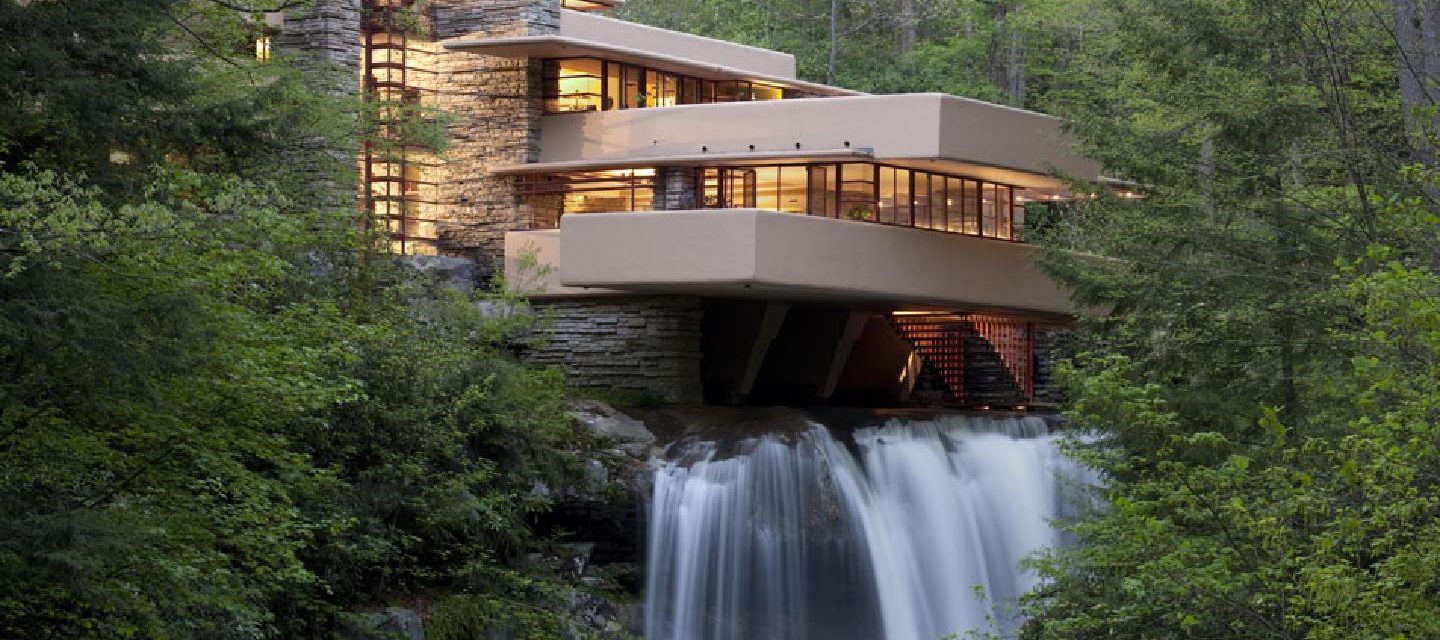Frank Lloyd Wright | Falling Water
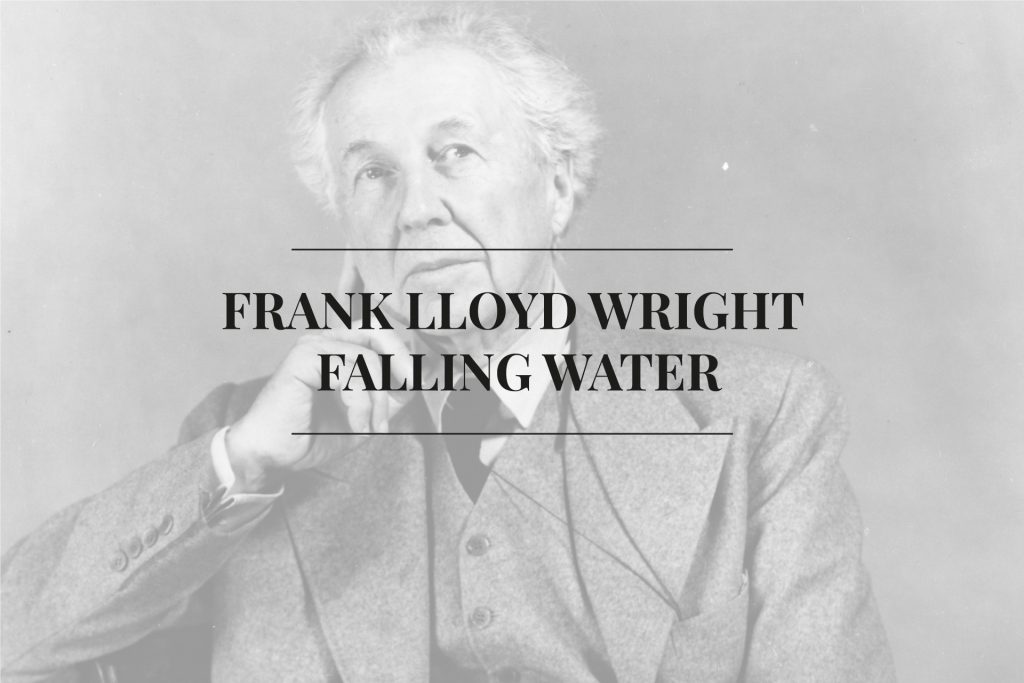
Born June 8, 1867, Frank Lloyd Wright is not only one of the world’s greatest architects but also the most controversial and inspiring. A solitary genius, he was a writer, art collector, philosopher, and visionary, and all of these designations inspired his approach to architecture.
Frank Lloyd was evidently a man ahead of his time. The design of many of the houses he sketched seemed ahead of their time, and there was often a difficulty in understanding his avant-garde vision. However, almost all of his modern infrastructure utilizes his ideals.
Wright’s designs were driven by a desire to fill the residents’ homes with life. He refers to his architecture as organic-an architecture that comes into complete harmony with the interior and exterior, in a philosophy that could be likened to a living organism with all parts relating to the whole, making form and function fully intertwined.
Wright believed in defining environments that were both functional and real, focusing not only on the look of a building but also on how it interconnects and enriches the lives of the people inside.
Houses like Fallingwater blend perfectly into their natural surroundings, both inspiring the setting. Frank Lloyd Wright’s architecture denotes the presence of materials such as wood and stone in their pure state.
Frank’s architecture left a legacy that endures to this day and inspires today’s luxury architecture. The influence comes in the thoughtful approaches to natural materials, the blending of indoor and outdoor spaces, and the rise of sustainable design.
- Architect Frank Lloyd Wright
Falling Water
Falling Water is one of the most iconic works of architecture by Frank Lloyd. Designed for the Kaufmann family in 1935, Fallingwater redefined the relationship between man, architecture, and nature.
The waterfall had been the family’s retreat for fifteen years, and when they asked Wright to design the house, they anticipated it facing the waterfall so they could enjoy the view. Instead, Wright integrated the design of the house with the waterfall itself, placing it right on top of it to make it part of the family’s life.
This design came about to further compliment the natural beauty in evidence, challenged by the waterfall and its melodious sounds. The power of the waterfall is always felt, not visually but through sound.
The design of this house develops around the fireplace, the hearth of the house that the architect considered to be the family’s gathering place. The stone of the fireplace physically brings the waterfall into the house.
Circulation through the house consists of dark, narrow passages, with the purpose that people experience a sense of compression compared to expansion the closer they are to the outside. The ceilings of the rooms are low in order to direct the gaze horizontally to look outside. The beauty of these spaces lies in their extensions into nature made with long terraces.
The terraces form a complex horizontal structure with their projections that free up space with their planes parallel to the ground. In order to support them, Wright worked with engineers Mendel Glickman and William Wesley Peters. The bet would be on the choice of materials.
Fallingwater’s exterior imposes a strong horizontal pattern with the bricks and long terraces. The windows on the facade have a special detail where they open at the corners, breaking the box of the house and opening it to the outside. The beauty of the detailing has perfected the house itself and even though there have been some structural issues that need constant maintenance because of its location, there is no doubt that Fallingwater is now a National Historic Landmark. All one has to do here is just listen.
- Exterior of Falling Water – Credits: Wale Street Journal
- Lateral side of the house – Credits: Orlando Sentinel
- Falling water view – Credits:Penisylvania center for the book
- Falling water’s design – Credits: Britannica


